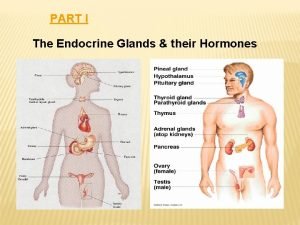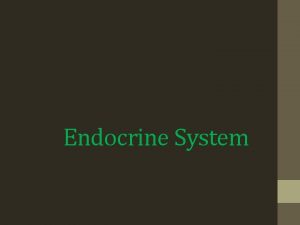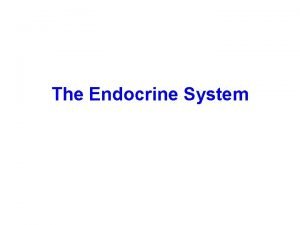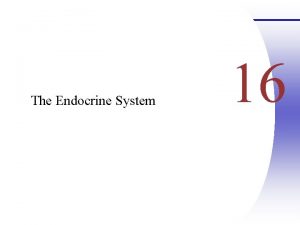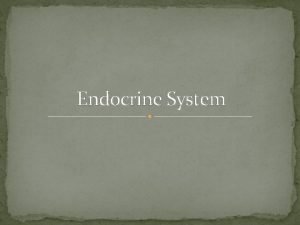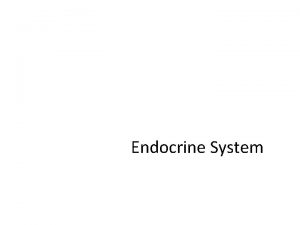Overview of the Endocrine System Center for Educational










- Slides: 10

Overview of the Endocrine System Center for Educational Outreach Baylor College of Medicine TEM of growth hormone producing cell from the pituitary gland. Growth hormone granules are shown in green. TEM © University of Edinburgh/Wellcome Images CC-BY-NC-ND 4. 0.

Major Components of the System n n The endocrine system is comprised of ductless glands that produce messengers called hormones. The endocrine system interacts and cooperates with the nervous system. Illustrations © Bill Blausen. CC-BY-SA 3. 0.

Pituitary Gland n n n The pituitary gland is divided into two lobes, the posterior and anterior pituitary. The hypothalamus stimulates release of certain pituitary hormones. The pituitary gland secretes many hormones, including tropic hormones (which stimulate other endocrine glands). Illustration courtesy of the National Cancer Institute, NIH.

Pineal Gland The pineal gland synthesizes and secretes melatonin, which helps regulate the sleep cycle and controls pigmentation. Illustration courtesy of the National Cancer Institute, NIH.

Thyroid Glands n n The thyroid gland has two lobes connected via the isthmus. It controls the rate at which the body uses energy and releases the hormones that regulate metabolism. Illustration courtesy of the National Cancer Institute, NIH.

Parathyroid Glands n n Parathyroid glands produce and secrete parathyroid hormones. Parathyroid hormones regulates the body’s calcium levels. Illustration courtesy of the National Cancer Institute, NIH.

Pancreas n n The pancreas is an organ with both exocrine and endocrine functions. The islets of Langerhans are the endocrine regions of the pancreas. They produce insulin and glucagon (hormones that work in opposite ways to regulate glucose concentrations in blood). Illustration courtesy of Medline. Plus, U. S. National Library of Medicine, NIH.

Adrenal Glands n n The adrenal glands, which sit atop each kidney, are comprised of the adrenal medulla and adrenal cortex. They release hormones, such as epinephrine, in response to stress. Illustration courtesy of the National Cancer Institute, NIH.

Gonads n n The gonads consist of the ovaries in females and the testes in males. The gonads release hormones that stimulate reproductive maturation and produce gametes. Illustrations courtesy of the National Cancer Institute, NIH.

Functions of the System n n Hormones released by the endocrine system regulate many functions, such as mood, growth, reproduction, tissue function and metabolism. Hormones are molecules produced in one part of the body that trigger a specific cellular response in another tissue or organ of the body.






